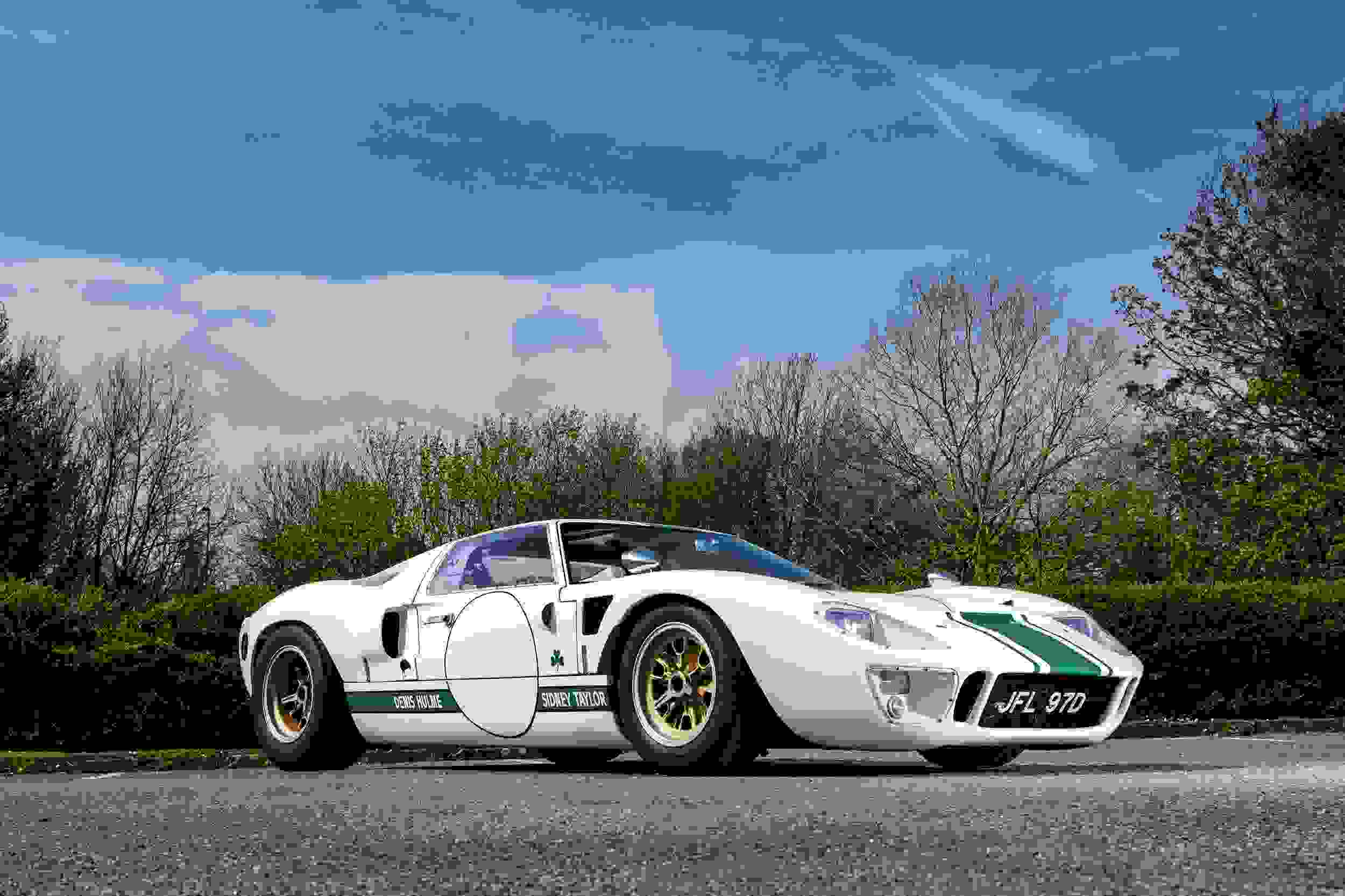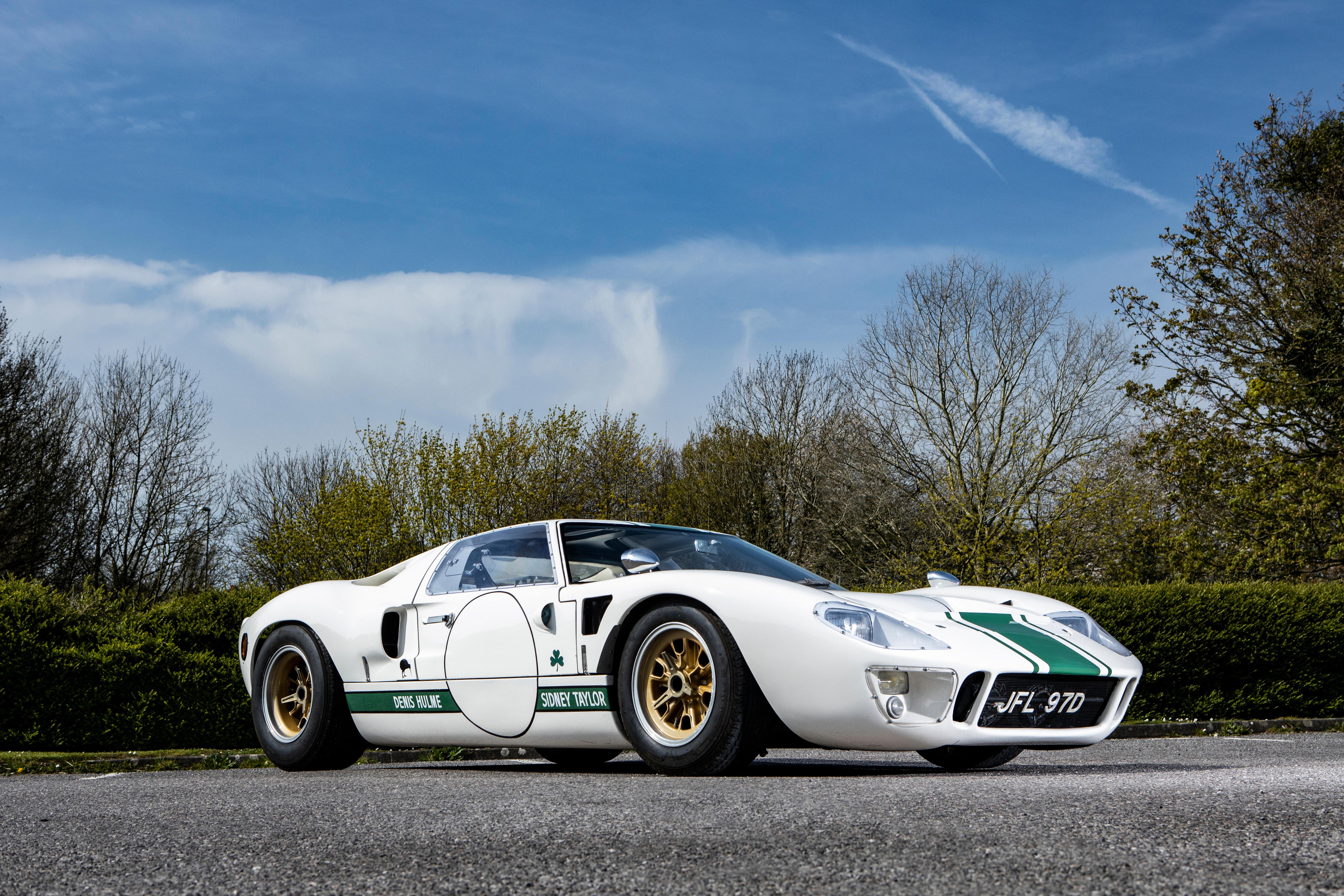
Born out of Henry Ford II's frustration, the Ford GT40 went on to compete in the world's most prestigious races with the best drivers of the 1960s.
As soon as he took over Ford in the early 1960s, Henry Ford II (1917-1987) wanted more than anything else for his brand to win the 24 Hours of Le Mans. In 1963, he began negotiations with Enzo Ferrari, whose company was in financial difficulties. After tough negotiations, Ford spent a lot of money (financial audits, etc.) to acquire Ferrari, but this was without counting on the impetuous character of the "Commendatore" who cancelled the sale at the last moment because of a problem with a clause prohibiting him from retaining total control of the Ferrari race team. Equally temperamental, Henry Ford II, deeply offended, swore that he would build a car himself to shine in the Sarthe. However, this is not an easy task for a general manufacturer and he turned to British craftsmen. In the end, Lola was chosen because the firm had developed the GT MK6, a powerful car with a mid-mounted V8 block. Ford bought a pair of chassis and hired Eric Broadley, 'Mr Lola', to design what would become the GT40.

Difficult adjusting
The car's debut at the 1964 Le Mans 24 Hour race was not a great one: one car was damaged and the other was destroyed due to severe aerodynamic problems which resulted in a lack of rear grip. The three GT40s entered ended up giving up due to mechanical problems. Ford then called upon the tuner and former driver Carroll Shelby to improve the car: he modified its aerodynamics for more downforce and installed another V8 engine, this time with a 7-litre capacity. Called GT40 MKII, this car returned to Le Mans in 1965. Despite the entry of 6 cars (2 MKIIs and 4 MKIs), Ford once again failed to make an impact! Far from being discouraged, the manufacturer with the blue oval returned in 1966 with no less than 13 cars! In the end, three MKIIs finished (finally) on the first three steps of the podium. The GT40 also won at Sebring and Daytona that year.

On the road to success
The following year, Ford presented the MK IV, an even more aerodynamic evolution of the MKII. Capable of reaching 340 km/h in a straight line, it won the 24 Hours of Le Mans and inflicted a severe beating on Ferrari, whose car was 4 laps behind. The car also triumphed at Sebring later in the year. In 1968, the FIA changed the regulations and reduced the engine sizes, which prevented Ford from participating with the MKIV. However, team manager John Wyer entered five "old" GT40 MKIs with a 4.7-litre engine with cylinder heads supplied by Gurney-Eagle. One of these cars, in the famous Gulf livery, won, although there was no real competition as Ferrari boycotted the race. In 1969, it was the Ickx-Oliver tandem that won, while another GT40 finished in third place.

The legend
In the few years that it had been running at Le Mans, the GT40 had become a legend, to the extent that it is one of the most replicated cars (along with the Lotus Seven) to date. Ford produced a total of 126 GT40s between 1964 and 1968, some of which were sold to private teams. Today, a real GT40 can fetch several million euros depending on its track record. For the rest, between the "authorised" replicas, those that are not but are correct and the approximations built in the backyards of British pubs, the amateur has the choice according to his budget, which ranges from 20,000 to several hundred thousand euros (R 330,000 to several million Rand).

























